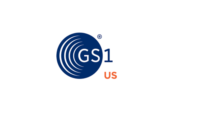BIZTRACKS
GS1 US Encourages Food Industry Adoption of 2D Barcodes for Traceability, Consumer Information

Image credit: Risto Kokkonen via Unsplash
June 26, 2024 commemorates 50 years since the debut of the first Universal Product Code (UPC) barcode scan, marking a pivotal moment in retail history. Today, the barcode is used to identify over 1 billion products and is scanned more than 10 billion times daily, serving as a cornerstone of global commerce.
While the UPC has endured for 50 years to aid price lookup at point-of-sale (POS), new two-dimensional (2D) barcodes, such as QR codes powered by GS1, are emerging on product packaging to provide consumers with detailed product information. A 2024 GS1 US consumer survey showed that 77 percent of consumers believe that product information is important when making a purchase and 79 percent of shoppers are more likely to purchase products with a scannable barcode/QR code (via smartphone) that provides the information they are seeking.
Through industrywide collaboration facilitated by GS1, brands globally are beginning their transition from UPCs to new 2D barcodes/QR codes on product packaging, and retailers have set a target date to accept them at checkout by 2027—part of a GS1 US initiative named Sunrise 2027. These GS1 web-enabled barcodes combine the capability and standards of the UPC and QR code to function at cash registers, offer rich product data from the brand that shoppers can access with a simple smartphone scan, and can help power retail inventory management, visibility, and traceability. Additionally, 20 of the world’s biggest companies—including Procter and Gamble (P&G), L’Oreal, and Nestlé—have signed a global joint statement calling for the adoption of these next-generation barcodes to revolutionize the consumer experience.
QR codes, powered by GS1, can provide a single gateway to help consumers understand product composition, sustainability efforts, and recalls while aiding retailers with inventory control, on-demand discounting, couponing, and more. Moreover, end-to-end supply chain traceability aided by the detailed records that can be embedded in 2D barcodes is especially crucial in the food industry. QR codes can be used to satisfy increased recordkeeping requirements under the U.S. Food and Drug Administration’s (FDA’s) Food Traceability Final Rule, fulfilling Subpart 204 of the Food Safety Modernization Act.
As a neutral, nonprofit standards organization, GS1 US will continue to facilitate industry collaboration on 2D barcode technology and its adoption during the transition to Sunrise 2027 and beyond.Looking for a reprint of this article?
From high-res PDFs to custom plaques, order your copy today!





